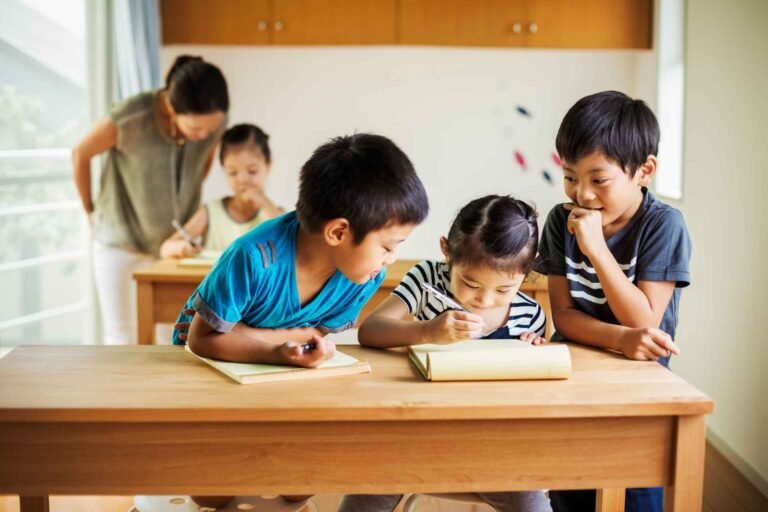Home » The Sycamore Center for Progressive Education Curriculum » Grade 10 Curriculum: Twentieth Century World History
Grade 10 Curriculum: Twentieth Century World History
Explore geography and global cultures from ancient civilizations to the Reformation.
Major Subjects: Bible, History, English, Filipino, Science, Math
Minor Subjects: Music and Art, Health, Physical Education, Home Economics and Livelihood Education, Information and Communication Technology


CORE SUBJECT
Bible 10
Introduction to Christian Apologetics, Part 2
This course introduces the students to C. S. Lewis’ seminal apologetics work, Mere Christianity, in order to equip them to understand, deepen, and defend their faith, and to empower them to articulate the fundamental principles of Christianity.
Learning Outcomes:
More specifically, learners are expected to exhibit cognitive, affective, and kinesthetic competencies as manifested in the following outcomes:
- Demonstrate a genuine foundational understanding of the Christian doctrines relevant to interpersonal and intrapersonal development, regardless of denominational differences.
- Recognize the reality and necessity of spiritual life through Christ, in terms of the betterment of one's mortal and eternal life.
- Practice moral behavior even in small daily acts, in accordance with the mindset and principles of the Christian faith.
- Trace the story of God's redeeming love as they examine and overview the entire Bible.
- Study intriguing biblical culture, geography, and archeology to better grasp the big-picture storyline.
Student References / Workbooks
- Mere Christianity by C.S. Lewis
CORE SUBJECT
History and Geography 10
Modern World History
This course focuses on the various social, cultural, economic, religious, political, and geographical narratives through the timelines in World History, specifically from the 20th Century to contemporary times.
These timelines cover changes during industrial revolution, the development of nation-states and postmodernism after the World Wars, and how world cultures and societies have continued to evolve up to present time.
Lessons in this course will be covered through various synchronous and asynchronous, online distance and in-person classroom activities that are aimed to create an immersive, engaging, relevant, and collaborative learning experience.
Learning Outcomes:
At the end of the school year, a student must be able to master their historical understanding and causal reasoning by analyzing the peoples, cultures and narratives of the contemporary period.
More specifically, learners are expected to exhibit cognitive, affective, and kinesthetic competencies as manifested in the following outcomes:
- Remember and elaborate on key historical events from various eras, and discuss how these events are connected to the present day.
- Study the various modern empires, nation-states, and societies using discussions, films, role-playing games, gamified activities, and other multimedia formats to gain insights into and relate to different cultures.
- Investigate significant historical events, conflicts, and disputes, forming personal viewpoints through research and analysis.
- Assess the advancements and breakthroughs from the Industrial Age to World War II to understand their impact on today's society.
- Describe the evolution of philosophical and political theories and connect them to the current governance systems of the modern world.
- Analyze the stories of contemporary empires and nations to cultivate an understanding and responsibility for the environmental, social, economic, and political dimensions of today's society, in collaboration with other academic fields.
- Offer solutions to historical and ongoing global challenges, drawing on a comprehensive understanding of world culture, society, and geography.
- Explore the geographical features of Asia, Africa, Europe, the Americas, and Oceania in this timeframe to provide context to discussions about world history and culture.
- Distinguish between accurate and misleading information by evaluating the credibility of historical records and contemporary news.
Student References / Workbooks
- Snow, P. (2018). History of the world map by map. DK Publishing.
LANGUAGE SUBJECT
English Language Arts and Literacy 10
20th Century Literature and Beyond
This course covers modern literary classics, an introduction to critical theory, and different avenues of formal written communication.
Learning Outcomes:
By the end of the academic year, a student should be capable of proficiently discussing both literary and informational texts and effectively utilizing these texts as references in formal communication.
More specifically, learners are expected to exhibit cognitive, affective, and kinesthetic competencies as manifested in the following outcomes:
- Utilize different critical theories to interpret literature, engaging in group discussions and crafting literary analysis essays.
- Understand and articulate the significance of literary works deemed as modern classics, discussing their relevance in contemporary society.
- Develop professional communication content using suitable media for academic and workplace environments.
Student References / Workbooks
- The Great Gatsby by F. Scott Fitzgerald
- The Giver by Lois Lowry
- Lord of the Flies by William Golding
- Brave New World by Aldous Huxley
- Never Let Me Go by Kazuo Ishiguro
LANGUAGE SUBJECT
Filipino 10
Si Rizal at ang Kulturang Filipino
Layunin ng kursong ito na paunlarin ang kakayahan ng mga mag-aaral sa kritikal at mapanuring pagbasa ng mga akda. Layon din nitong lubos na pag-aralan ang panitikang Filipino at ang kulturang kaakibat nito, upang ito’y mapangalagaan at mapaunlad, at nang sa gayon ay magpatuloy bilang isang mahalagang halimbawa para sa kasalukuyang henerasyon.
Inaasahan ding ang mga mag-aaral ay magiging mahusay sa paggamit ng sariling wika, maging sa pagsulat o sa pang-araw-araw na pakikipagtalastasan.
Learning Outcomes:
Sa dulo ng taong pang-akademiko, inaasahan na ang mga mag-aaral ay magpapakita ng mga kasanayan at kakayahan na katulad ng ipinakita ni Rizal sa kanyang papel sa pakikipaglaban at pagtatanggol ng ating bansa.
- Nakakapagbigay ng buod ng mahahalagang pangyayari at detalye mula sa iba't ibang akda upang higit na maunawaan ang nilalaman.
- Nailalapat ang mga aral na nakukuha mula sa mga binasang akda para sa pagiging mas responsableng mamamayan.
- Nagagamit ang katutubong wika sa pagpapahayag ng sariling mga ideya, damdamin, at karanasan, sa pagsusulat man o pakikipag-usap.
- Napagsasama-sama ang natutunan sa gramatika at pagsulat upang makalikha ng maayos at makabuluhang komposisyon na sumasalamin sa sariling opinyon at damdamin.
- Maingat na sinusuri ang angkop na asal at mga halagang moral para sa pagiging makabayan, matapat, at kritikal na mag-aaral.
- Nakikilahok sa pagpapaunlad ng lipunan gamit ang sariling wika, na nag-aambag sa pagiging produktibo at mahalagang mamamayan.
- Nakakapagpalitan ng mga pananaw tungkol sa mga problema, aral, o di-pagkakasunduan mula sa mga binasang akda para sa mas mahusay na pakikipagtalastasan.
- Inaalagaan ang kulturang Pilipino para sa pagpapayabong at pagpapamana nito sa susunod na mga henerasyon.
- Binibigyan ng pagkakataong balikan at iugnay ang mga natutunan sa mga nakaraang aralin sa kasalukuyang pag-aaral.
Student References / Workbooks
- El Filibusterismo ni Virgilio S. Almario
- ‘Gapo ni Lualhati Bautista
STEM SUBJECT
Science 10
Physics
Learning Outcomes:
- Solve problems by applying principles learned in physics to develop critical thinking through simulations and demonstrations.
- Manipulate and derive formulas to solve word problems through written assessments.
- Formulate scientific points of view to develop critical thinking skills through the evaluation and interpretation of different forms of data.
- Apply concepts of physics in real-life situations to connect the fundamentals of physics with day-to-day life scenarios.
- Design experiments and constructive peer review testing, using knowledge of different types of experimentation, to practice its applications through the study of scientific research.
Student References / Workbooks
- List books that students are required to get copies of, and/or books provided by teacher
- No need to include teacher-only references
STEM SUBJECT
Mathematics 10
Pre-Calculus
This course has five content areas in the curriculum: Number Sense, Measurement, Geometry, Patterns and Algebra, and Statistics and Probability. It specifically covers Sets and Real Number Systems, Conversion of Units of Measurement, Algebraic Expressions and Properties of Real Numbers as applied in Linear Equations and Inequalities in One Variable, Sides and Angles of Polygons, Data collection, and Presentation, and Measures of Central tendency and Variability.
The curriculum of this course is divided into five key sections: Understanding Numbers, Measuring Techniques, Geometric Concepts, Pattern Recognition and Algebra, along with Statistical Methods and Probability. It particularly focuses on topics such as Sequences and Series, Polynomial Studies including Equations and Functions, the Study of Circles, the Fundamentals of Coordinate Geometry, the Principles of Combinatorics and Probability, as well as Positional Measurements.
It provides a solid foundation for Mathematics in Grade 11 to Grade 12. More importantly, it provides necessary concepts and life skills needed by learners as they proceed to the next stage in their life as learners and as citizens.
Learning Outcomes:
- Create and resolve mathematical problems related to sequences, polynomials, and polynomial equations.
- Develop and solve complex problems that include circles and associated concepts.
- Employ accurate counting methods and probability theories in reaching conclusions and making informed decisions.
- Highlight the role and significance of mathematics as a tool for communication and problem-solving in everyday scenarios.
- Foster key attributes like resilience and perseverance, integrating them into discussions and mathematical word problems to strengthen character.
- Design a tangible project that reflects the student's educational journey, allowing them to express it in line with their interests or passions.
Student References / Workbooks
- Pre-Algebra A Teaching Textbook by Greg and Shawn Sabouri

